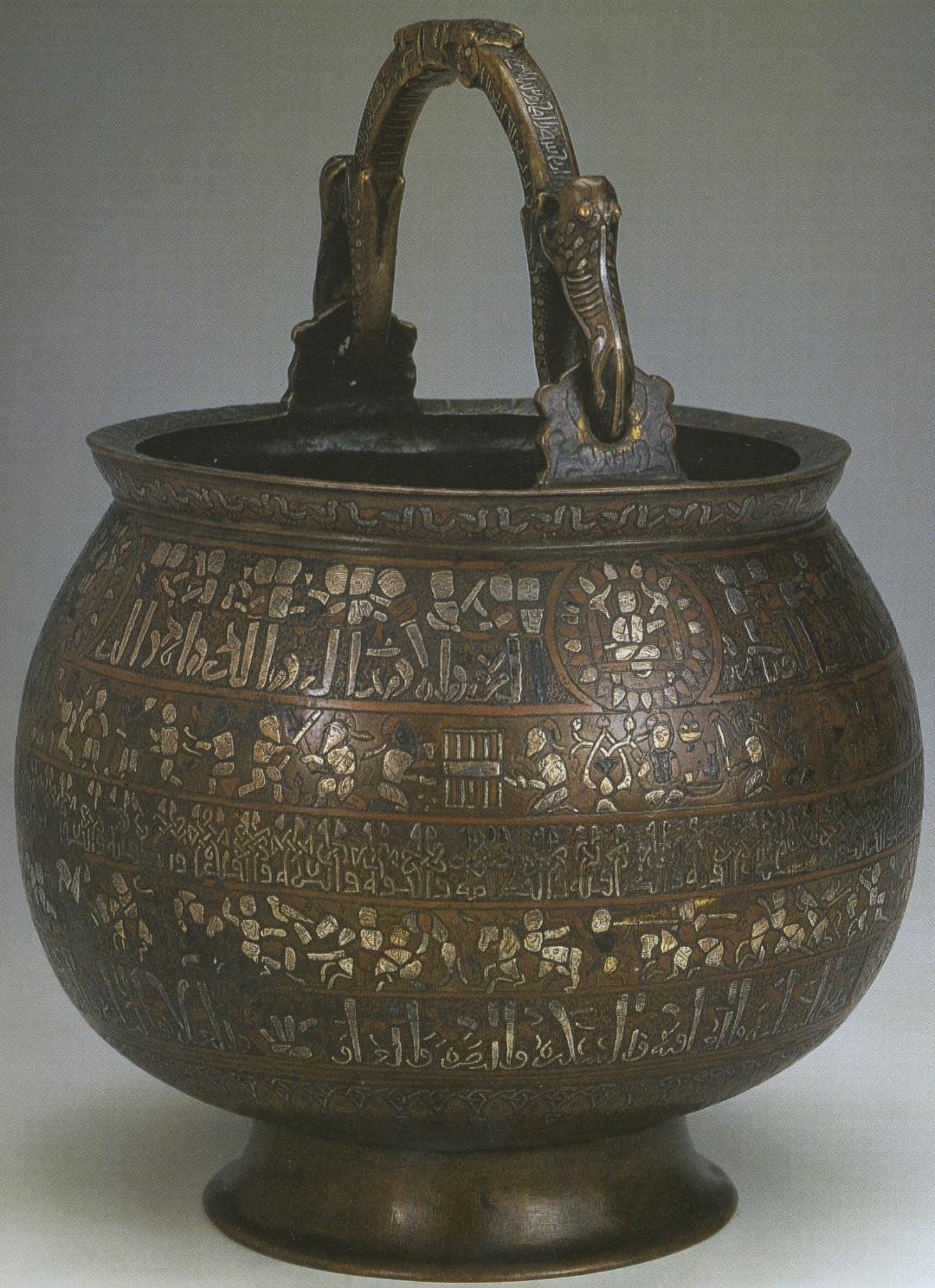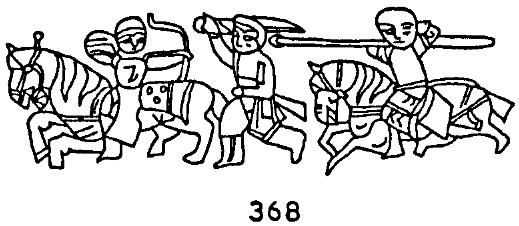The Bobrinski Bucket
Ghūrid Afghanistān, 1163 AD

Bobrinski Bucket, 1163, Herat
Dated, tells us where it was made and about the commission; probably used to be taken to the bath house as Islam is theologically against gold and silver vessels; inscriptions alternating with figural scenes (which speak to you in the first person); on the rim - dedicatory inscription in Persian.
Bronze, inlaid with silver and copper, incision on the silver inlay to make faces, etc.
Source: StudyBlue

Source: StudyBlue
Referenced as figure 368 in The military technology of classical Islam by D Nicolle
368. Bronze cauldron, The Bobrinski Bucket, 1163 AD, Harāt, Hermitage, Leningrad (Ric I).

pp 398-399. Very little pictorial evidence survives from the Ghūrid era,
although one of the finest pieces of Muslim metalwork was made in the city of Hirāt
at a time when both the Saljūqs of Iran and the Ghūrids of Afghanistān were reeling before a new wave of Ghuzz Turkish nomads.
This metal cauldron, known as the Bobrinski bucket, does show a solitary soldier with a curved sword, perhaps a galāchūr, battling against two horsemen (Fig. 368).
He may, however, himself be a dismounted horseman.
See also The Bobrinski Bucket, Ghūrid Afghanistān, 1163 AD 1st image
and The Bobrinski Bucket, Ghūrid Afghanistān, 1163 AD 4th image


